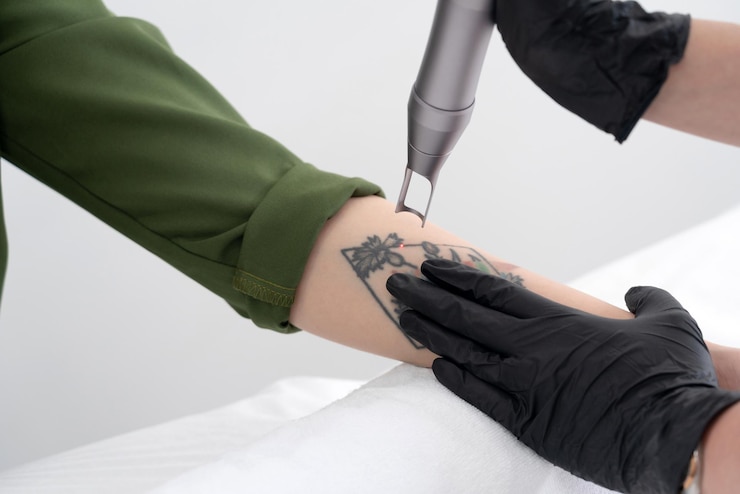Tattoos naturally fade over time due to sun exposure, the skin’s regeneration cycle, ink composition, and placement depth. Lifestyle factors such as skincare habits, immune system activity, and even smoking can accelerate this fading. As a result, previously vibrant tattoos may appear dull, patchy, or blurry. Many individuals in search of a solution often turn to Laser Tattoo Removal in Dubai—a leading method for safely and effectively eliminating unwanted ink, including faded tattoos.
How Laser Tattoo Removal Works
The Science Behind Laser Technology
Laser tattoo removal uses high-intensity light beams to target the pigment embedded in the skin. The laser emits pulses of energy that are absorbed by the tattoo ink. This causes the ink to heat up and shatter into tiny particles, which are then cleared away by the body’s immune system over time.
Why Faded Tattoos Respond Well
Faded tattoos already have partially broken-down ink particles, making them more receptive to laser treatment. The laser doesn't need to expend as much energy to fragment the remaining pigment, and in many cases, the tattoo clears up with fewer sessions compared to a fresh, saturated tattoo.
Factors Affecting Laser Tattoo Removal Success
Ink Color and Composition
Ink color plays a significant role in how well a tattoo responds to laser treatment. Black and dark blue inks are typically the easiest to remove because they absorb more laser wavelengths. Colors like green, yellow, and red may require more sessions and specialized lasers. Faded tattoos often have lighter remnants of these colors, which may still present challenges during removal.
Depth and Density of Ink
Older, faded tattoos may not be as densely inked as newer ones, making laser penetration more effective. If the ink was originally deposited too deeply, however, even a faded tattoo might still need multiple treatments to reach the embedded pigment.
Skin Tone and Type
Laser settings are carefully adjusted based on the individual’s skin tone and type to minimize risks like hyperpigmentation or scarring. Generally, lighter skin tones tend to show quicker results, but modern laser technologies have advanced to safely treat a variety of skin types with high precision.
Number of Sessions Required
While faded tattoos can require fewer sessions, complete removal is still a gradual process. Each session is spaced weeks apart to allow the body to flush out ink particles and for the skin to heal properly. Some people may see dramatic improvement after just a few treatments, while others may need additional sessions depending on the ink type and skin’s response.
Patience is key. Even for a faded tattoo, removal is not instant, but the results can be highly satisfactory over time.
Conclusion
Laser technology continues to evolve, offering safe and effective options for those looking to part ways with old or faded ink. The good news is that faded tattoos often have a head start in the removal process, responding well to treatment and requiring fewer sessions in many cases.
With the right laser technique and a tailored treatment plan, even the most stubborn ink can be significantly reduced or completely removed. Whether the goal is full erasure or preparing for a new tattoo, understanding how laser treatment interacts with faded ink is the first step toward making an informed decision.





Comments